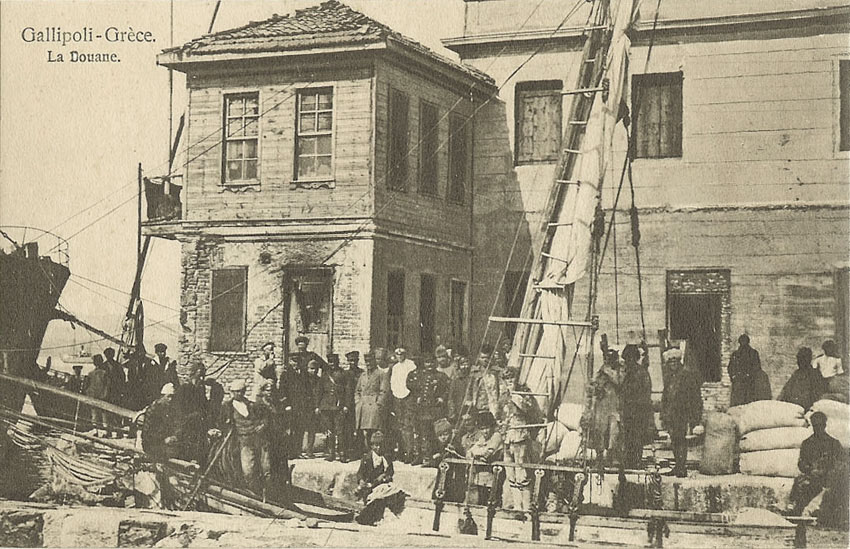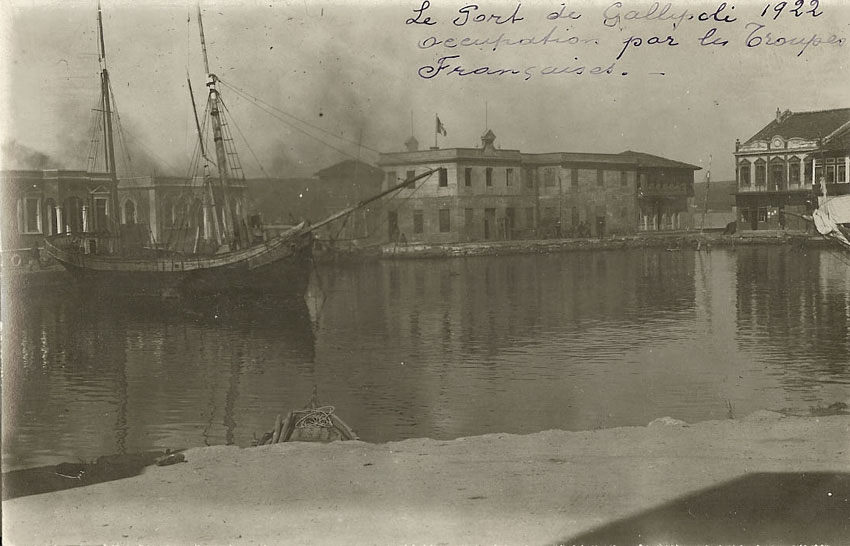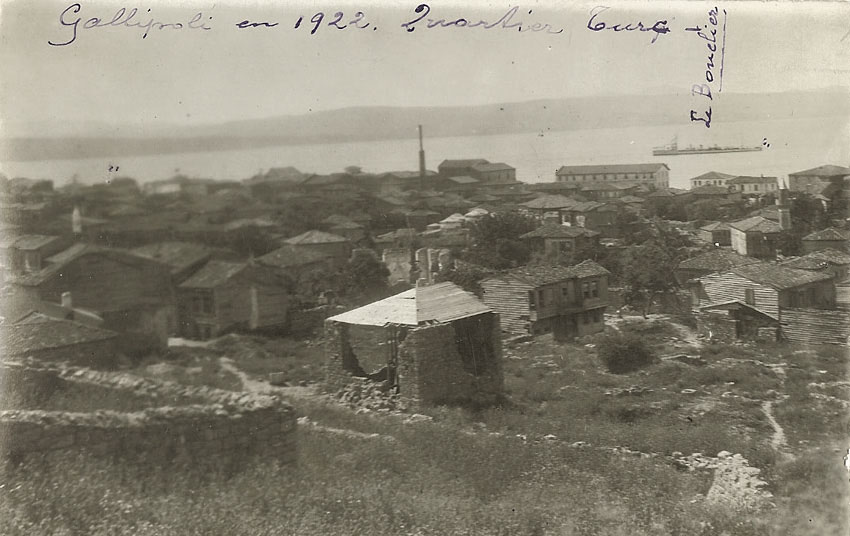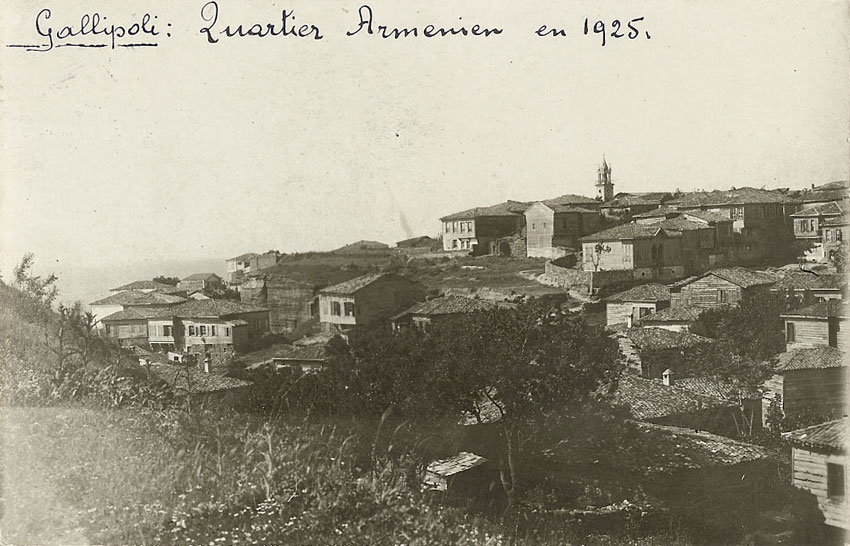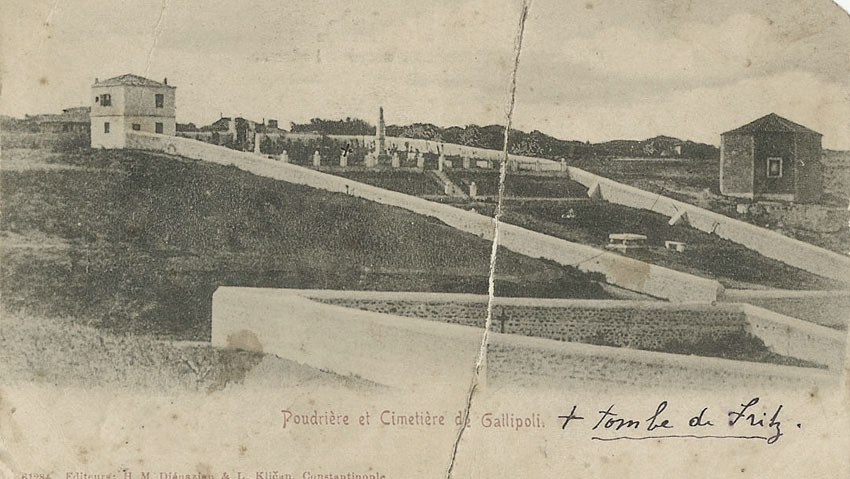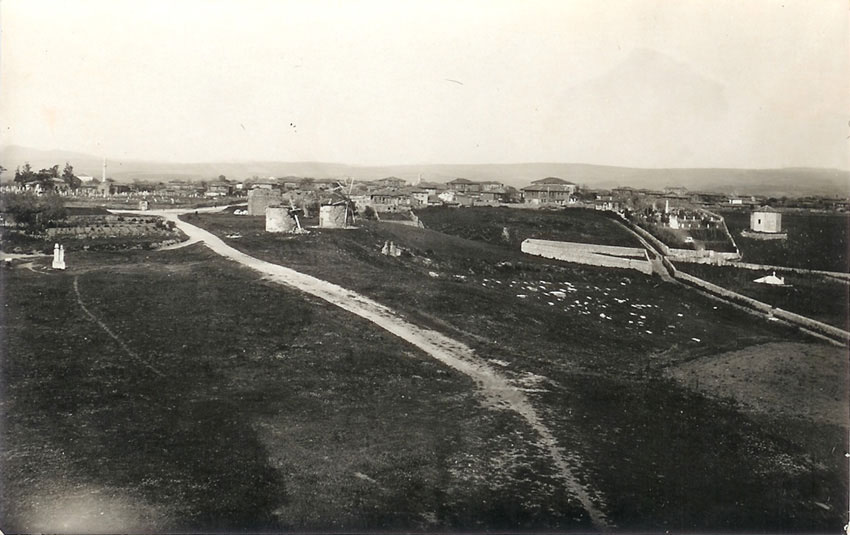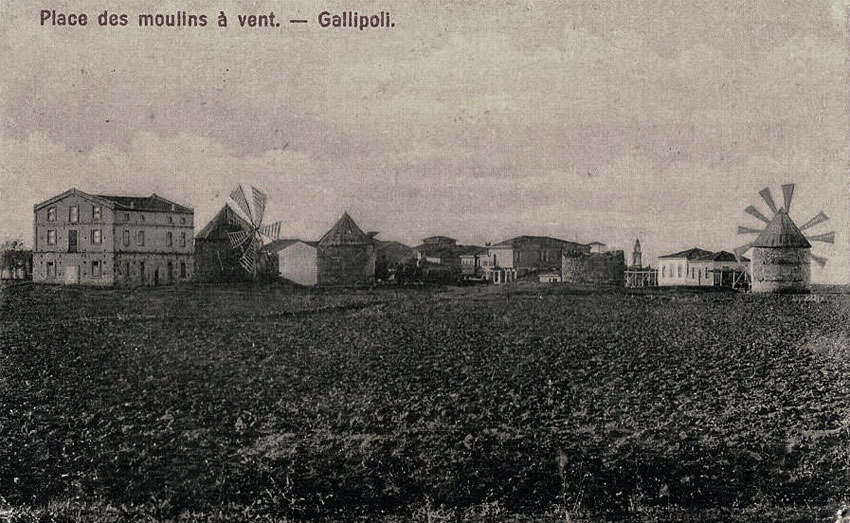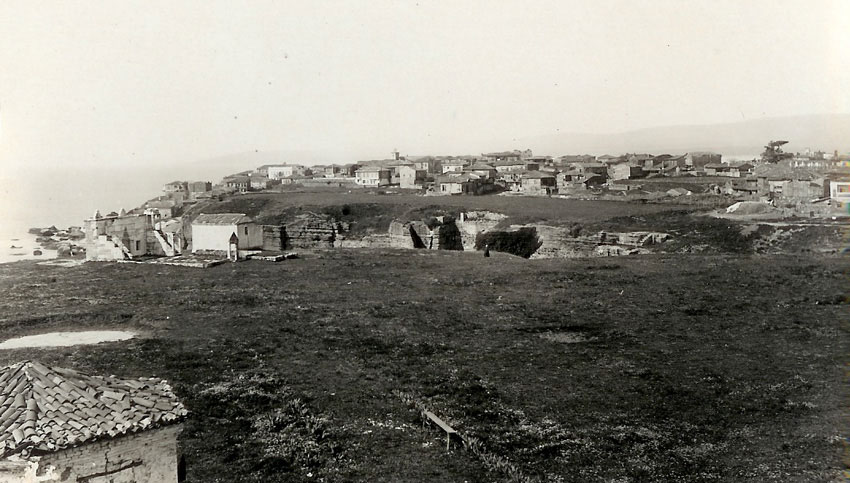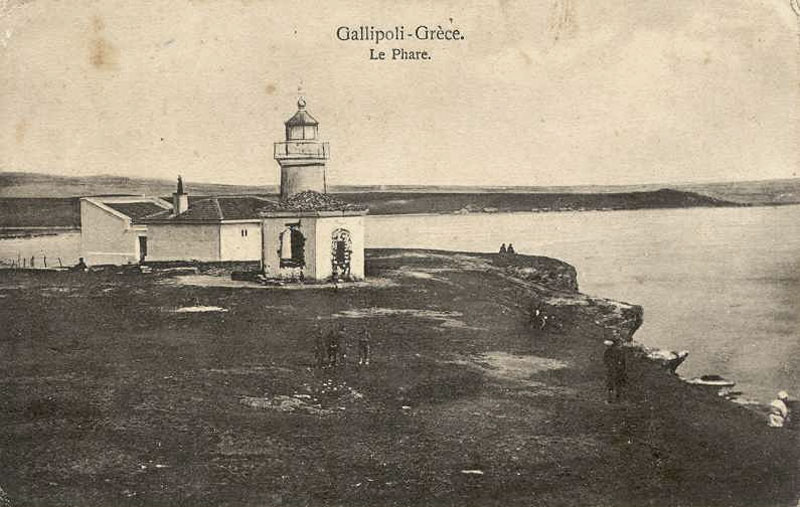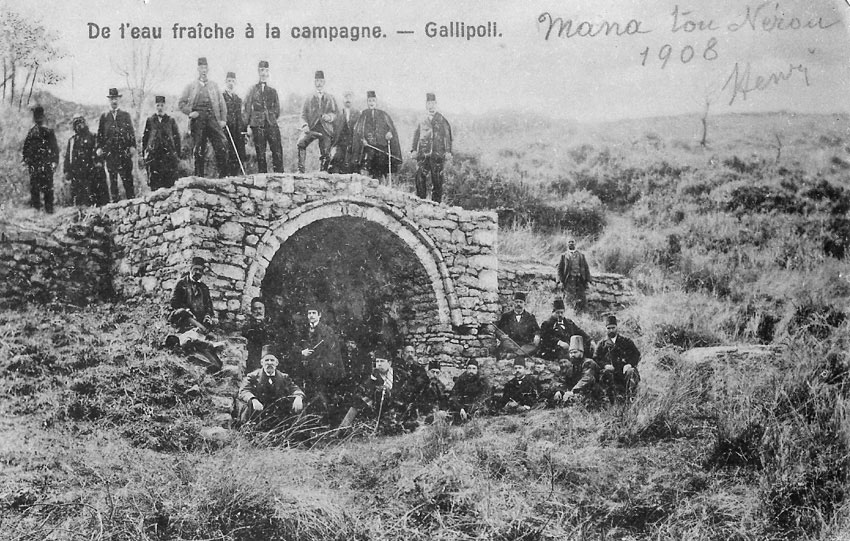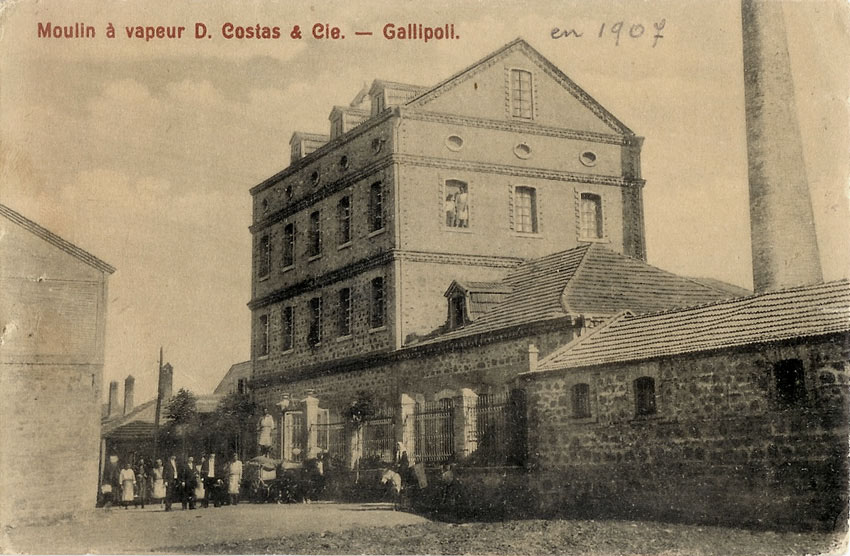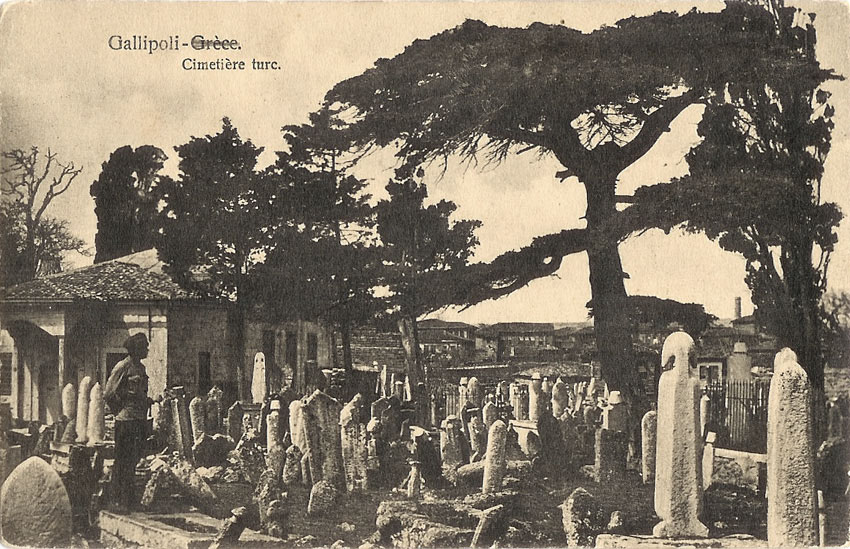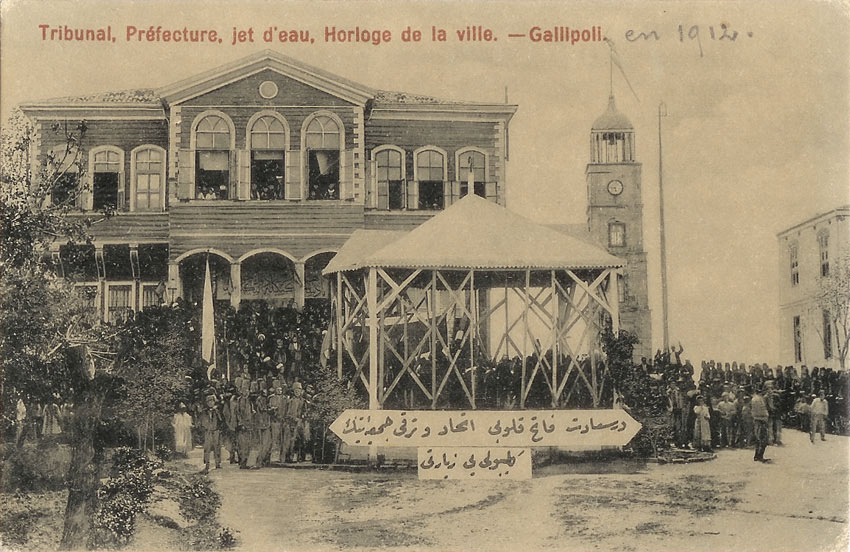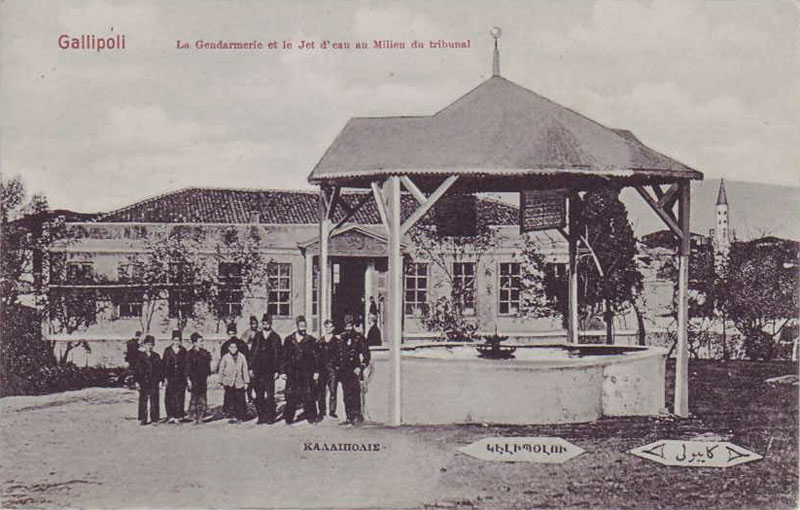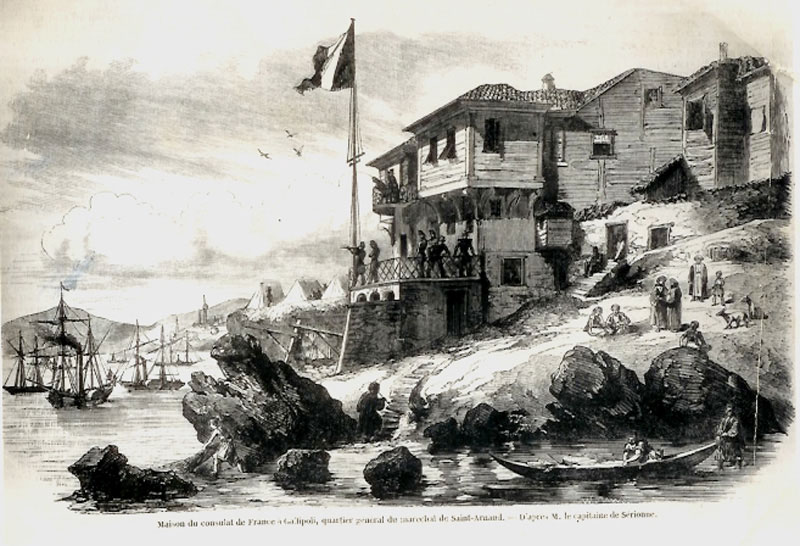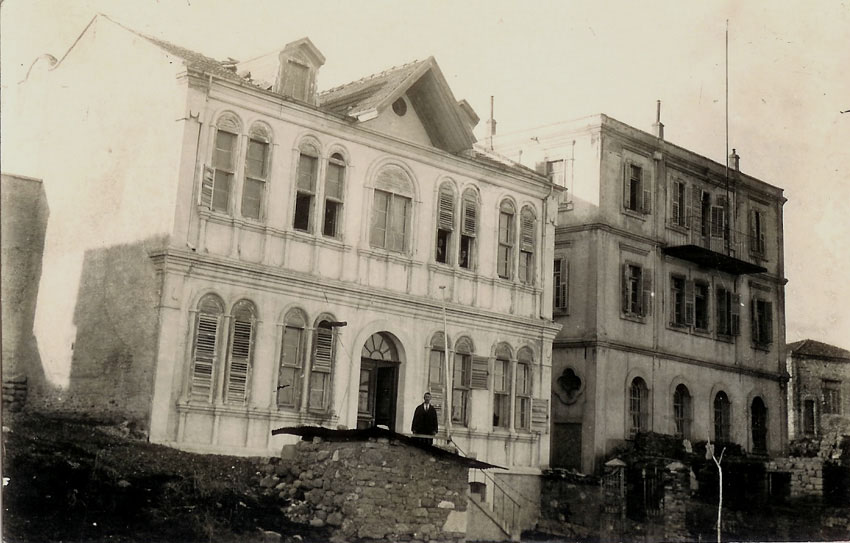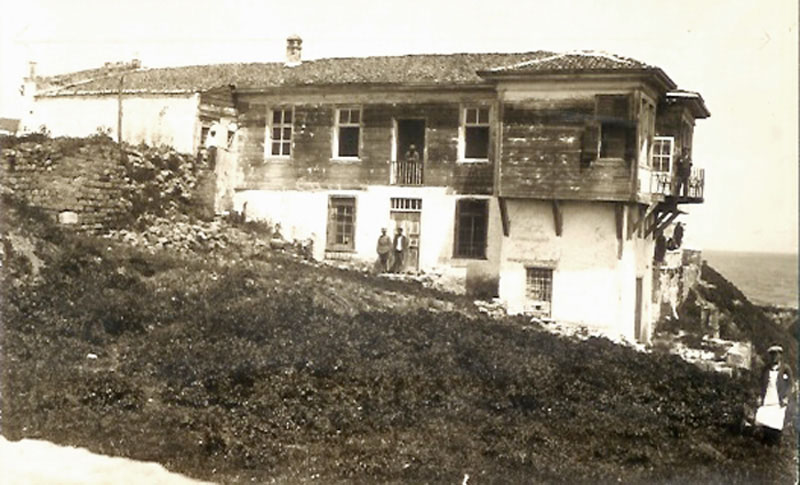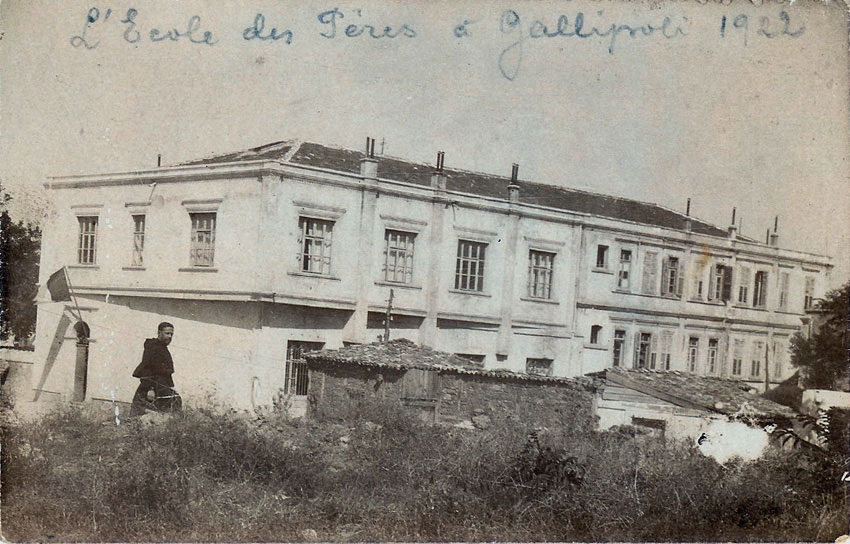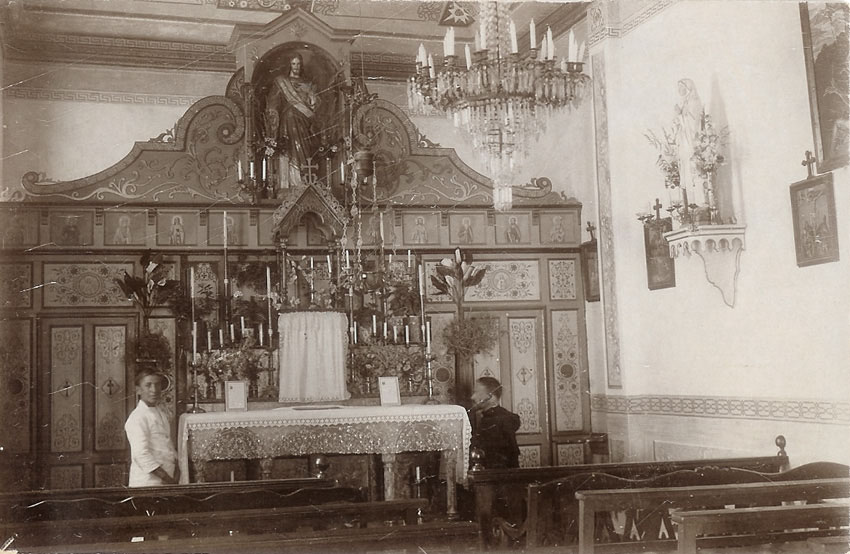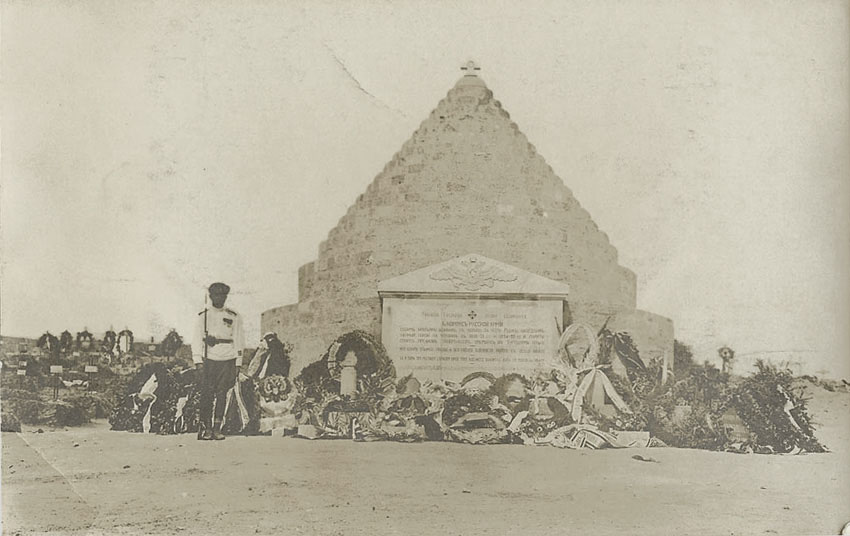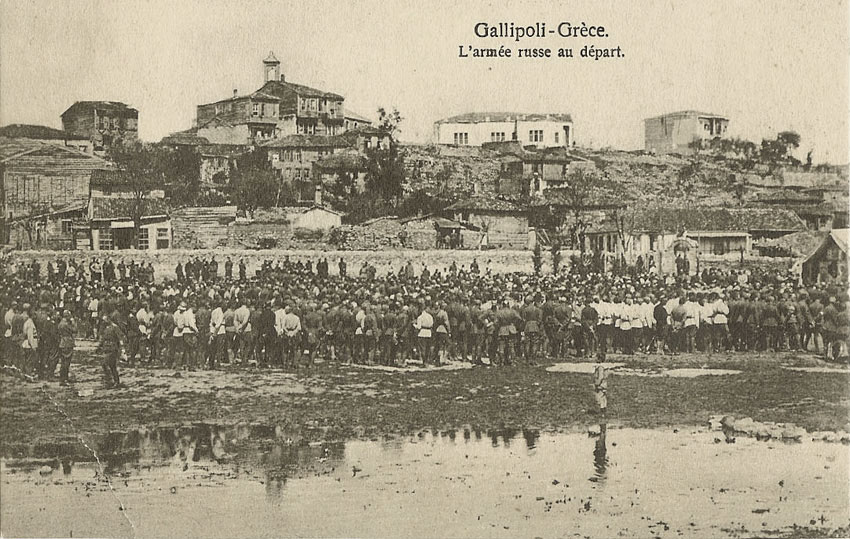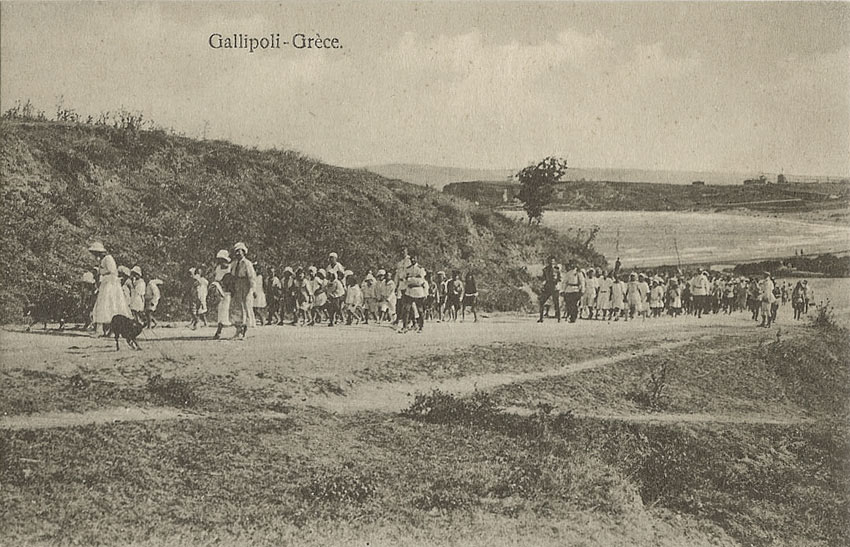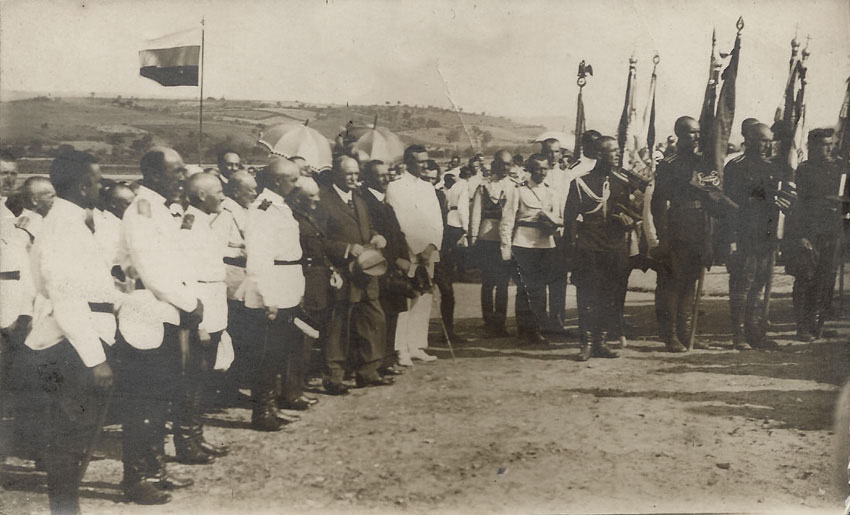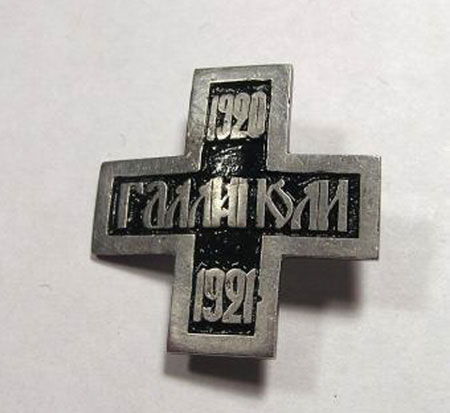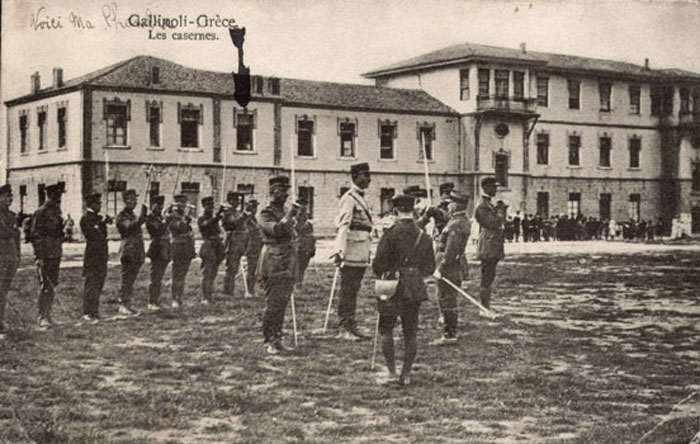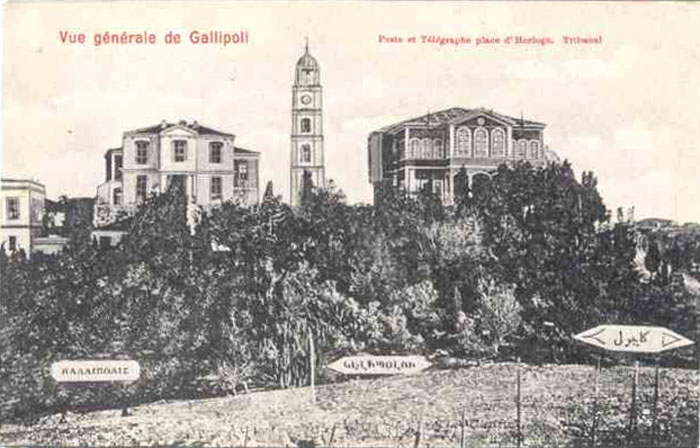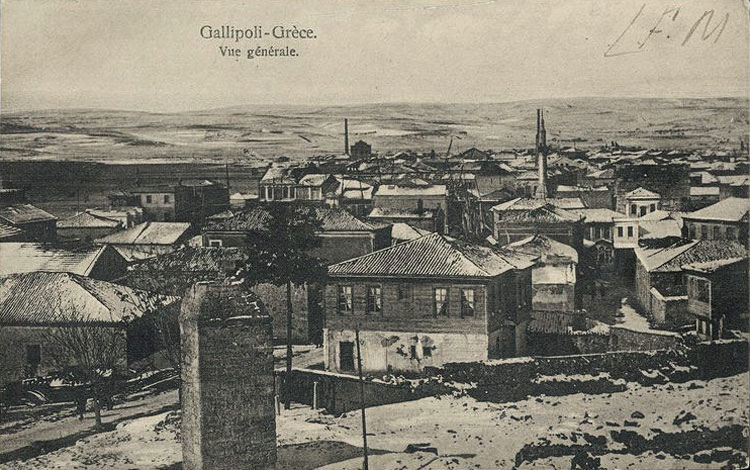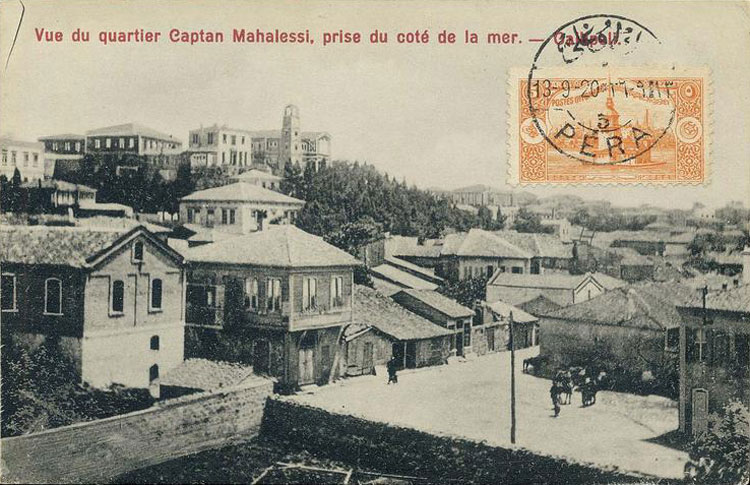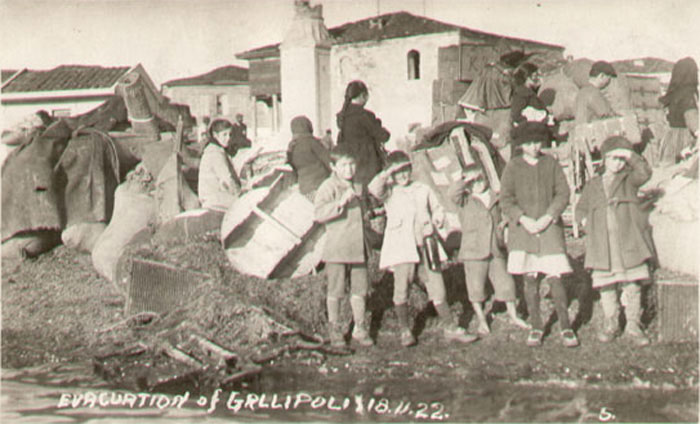|
|
The Customs House at Gallipoli 1920-21. Note uniformed officers on quayside. The supplies being unloaded were badly needed. |
|
Harbour at Gallipoli in 1922 during French occupation and administration. |
|
The Turkish quarter of Gallipoli in 1922. |
|
|
The Armenian quarter of Gallipoli in 1925. |
|
|
The Crimean War Cemetery of the French in Gallipoli (and a headstone of a German marked in X). Ottoman era postcard approx. 1901-1910. The cemetery nowadays is well looked-after and can be visited. The tomb to the right is that of Saruca Pasha, built in 1436. He was an Admiral of the Ottoman Navy who in 1391 built the local ship yard. The tomb still stands today in an altered restored state. |
|
A distant view of the same cemeteries. The Crimean War French Cemetery is clearly visible. One building towards the right must be the dervish lodge (Mevlevihane), now re-opened. The Russian memorial should be in the middle ground but is lost among the houses. The lighthouse is behind us to the right. In fact, I think this photo may have been taken from the top of the lighthouse. The 2 windmills are now gone, but where the small water fountain is just below them is now the tomb of “Bayraklı Baba”, one of the main attractions of Gelibolu for Turkish tourists nowadays - to view this hover here. |
|
|
Gallipoli viewed from the outskirts. The most noticeable feature is the open air-mosque “Namazgah” dating from early Ottoman times. It is one of the few structures of its kind left in the world. The lighthouse on the headland is out of sight to the left. Beyond the Namazgah is a steep gap in the cliffs leading down to the sea. In the far distance, the group of trees and cemetery nearby resemble what we can see in the photo above this one. Notice the boulders on the shore. Just above is where the French consulate was. |
|
|
Currently a mystery, possibly municipal or state officials inspecting the walled springs in the countryside for the fresh water network? The Greek inscription reads “Mother of the Water”. |
|
A large steam powered flour mill owned by a local Greek. The factory building and chimney survived the war and are still seen in 1920s photos but must have been demolished later on. This is probably the steam-flour mill referred to in the online “1911 encyclopedia”. |
|
The Moslem cemetery. This is a 1918-23 occupation postcard. From the white uniform, this must be a Russian soldier. |
|
Gallipoli Courts, Town Hall (the current one probably occupies the same place), fountain and clock tower (no longer standing). The large crowd of people is due to the visit by the “Dersaadet Fatih Kulubu” [Constantinople Victory Club] and “Ittihat Terakki Cemiyeti” [ Committee of Union and Progress]. Below, what appears to be this square in earlier times. |
|
|
An engraving from the magazine called “L’Illustration” dated 1854 of the French Consulate of Gallipoli. The ships in the harbour and white tents in the background fairly conclusively identify it as belonging to the Crimean War (1854-56). The boulders by the shore are still there, but now there is a road at the base of the cliff round from the main harbour to the other side of the headland. Nowadays, there are important military buildings on the slope towards the top of the cliff. In another engraving showing the French troops landing during the Crimean War, there is a flag flying at about the same place as in this print. This was also the private house of the Consul, François d’Andria, the great-grandfather of contributor Marie Anne Marandet. This building was taken over by the German General Liman von Sanders in 1916, the overall commander of this crucial front against Allied attacks. The house was destroyed by a fire in 1923. It was located in the area called "Balıkpazarı” [fish-market]; the land was bought by the Turkish government and they built a military barracks on it.
|
|
Perhaps the French Consulate at a later date? |
|
The François d’Andria house in 1918, by then in a bad state and looted of its contents. |
|
The Catholic Freres School in Gallipoli. |
|
The Catholic Chapelle of the Fathers of the Assumptionists - is it the chapel of the school? My grand father: Henri d’Andria helped the settlement of the Assumptionists Fathers in 1899 by buying under his own name the land on which they built their school and church. The school and chapel are almost certainly no longer standing. |
|
|
The original White Russian monument for their own war dead in Gallipoli - this was rebuilt in May 2008 with a ceremony attended by descendants, details: |
|
|
White Russian Army on the shore at Gallipoli, probably waiting to depart for Europe in November 1921. |
|
Families of the White Russian Army on a summer outing. |
|
|
Gallipoli was but a temporary refuge for this contingent of General Wrangel’s defeated Southern White Army, which escaped in November 1920 on around 120 commandeered military and civilian ships from the Crimea, the greater portion camping in Constantinople. This photographs is dated as 1920, when this zone was under Allied occupation. The fleet ended in Tunisia, where it was “desarmé”. Of the population on the boats (civilian & military) some settled in Tunisia (there is still a white Russian church in Tunis) or left for other countries (most to Serbia, Bulgaria, Prague and the USA). The boats were returned to the Red Russians a few years later by the French government. I have an article about it but cannot put my hand on it.
The civilian in the middle holding his hat is Henri d’Andria who was the High Commissioner in Gallipoli at that time. He is also the grandfather of the above images contributor Marie Anne Marandet - postcard interpretation courtesy of Graham Lee. |
|
|
White Russian commemorative medal. |
|
|
French occupation forces in Gallipoli. |
|
|
|
|
|
|
|
|
Evacuation of Gallipoli by the Greeks (18.11.1922). images of White Russian refugees in Constantinople. |
